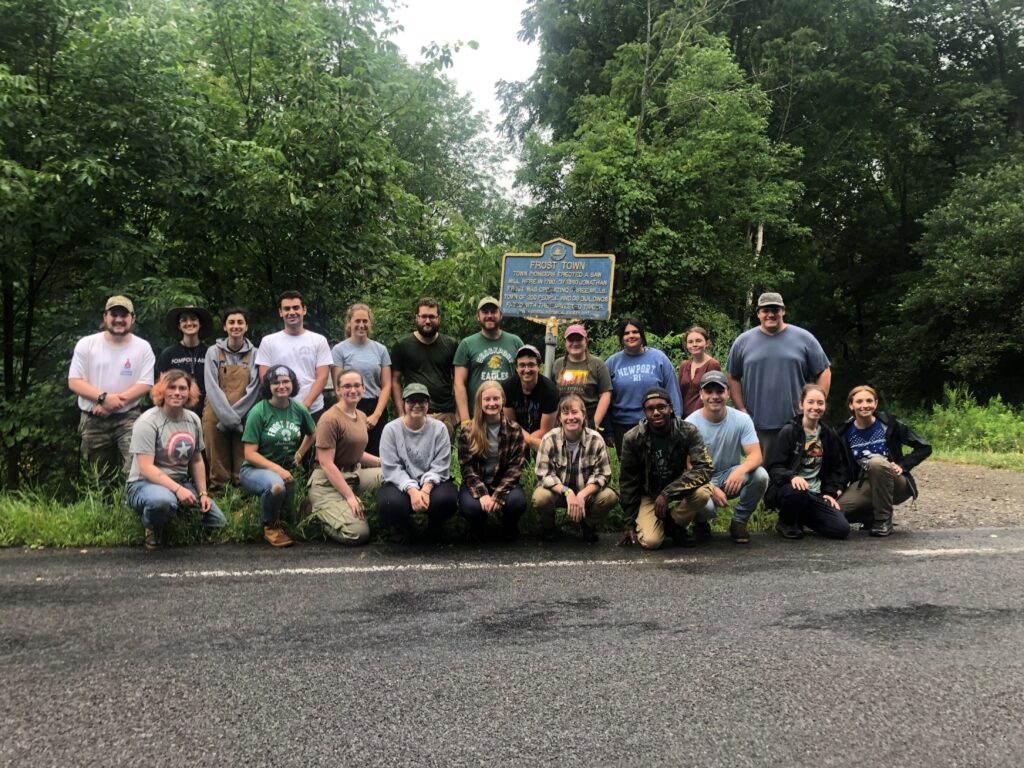
Before buying your first metal detector and setting out in search of buried treasure, it’s important to educate yourself on the rules of responsible metal detecting. This practice involves a mindful and considerate approach to exploring historical sites, contributing positively to archaeological understanding, and ensuring the preservation of our cultural heritage for future generations.
Alexander Smith, an assistant professor of anthropology with SUNY Brockport, has excavated and surveyed in many parts of the world, including Jordan, Guatemala, Spain, Italy, and Montserrat. He’s also the director of Frost Town Archaeology, a collaboration with SUNY Brockport and the Cumming Nature Center (CNC) that explores a nineteenth-century logging village on the nature center property.
“Whenever someone goes into a field looking for objects, they have to make sure they are being responsible to the history of the space, the property owners, and the descendant groups who have a connection to that space,” says Smith. “At its worst, metal detecting can be very destructive to archaeological sites and can be very harmful for the preservation of heritage. But responsibility is the key word, making sure that metal detecting is done in areas where there are no known sites that could be disturbed by digging holes, and the objects are clearly surface or near-surface remains.”
When practiced responsibly, metal detecting can be a useful tool in archaeology and heritage studies. Beyond formal excavation efforts, hobbyist metal detecting presents opportunities to gather information about archaeological sites that may otherwise remain undiscovered.
“The most important thing is awareness,” Smith explains. “Archeological sites are all around us, and they hold an immense amount of information. That information is not always best served by excavation or digging to find objects. Systematic excavation is essential for understanding the full depth of a heritage space if it is to be analyzed. But excavation, even when done by a professional, is still a form of destruction. Heritage sites are a finite resource, and any form of digging cannot be undone. We have to be certain of what we are doing before we ever put a shovel to the ground.”
Smith stresses the importance of doing your research before venturing onto any piece of land in search of buried history. Permits are needed for nearly all public spaces, including state and federal lands, and private property necessitates the permission of the landowner. It’s also extremely important to respect Native American sites in the region and not metal detect or excavate without the explicit permission of the Seneca Nation.
“Archaeologists are most concerned with the preservation of heritage sites and ethical interactions therein,” says Smith. “We also love enthusiasm for the past and past materiality. It’s so powerful!”
For more information, visit New York State Archaeological Association, nysarchaeology.org/nysaa/ Archaeological Institute of America, Rochester Chapter, archaeological.org/ society/rochester/
Frost Town Archaeology, frosttownarchaeology.com Instagram, @frosttownarchaeology
Views: 4




